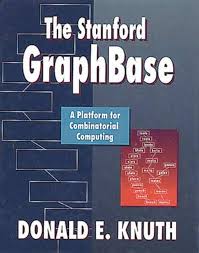Stanford GraphBase: A Comprehensive White Paper
Introduction
The Stanford GraphBase (SGB) is a collection of real-world graphs, including social networks, road networks, and other complex systems. It has been a valuable resource for researchers in various fields, including computer science, mathematics, and sociology. This white paper provides a detailed overview of the SGB, its datasets, and its applications.
Datasets
The SGB contains a diverse range of datasets, each with its own unique characteristics and challenges. Some of the most notable datasets include:
- Krackhardt's Kite: A small social network of 10 people and 24 ties.
- Les Miserables: A co-appearance network of characters in Victor Hugo's novel.
- Erdős Rényi Graphs: A family of random graphs with different densities.
- Watts Strogatz Graphs: Small-world networks with a high clustering coefficient.
- Barabási Albert Graphs: Scale-free networks with a power-law degree distribution.
Applications
The SGB has been used for a wide variety of research purposes, including:
- Graph Algorithms: Testing and benchmarking new graph algorithms.
- Network Analysis: Studying the structure and properties of real-world networks.
- Social Network Analysis: Analyzing social interactions and relationships.
- Computational Biology: Modeling biological networks, such as protein-protein interaction networks.
- Transportation Modeling: Studying transportation networks and traffic flow.
Challenges and Limitations
While the SGB is a valuable resource, it also has some limitations:
- Size: Some of the datasets in the SGB are relatively small, which may limit their applicability to large-scale problems.
- Representativeness: The datasets in the SGB may not be representative of all types of graphs, particularly those from emerging domains such as the Internet of Things and social media.
- Privacy: Some of the datasets in the SGB contain sensitive personal information, which raises privacy concerns.
Future Directions
As the field of graph analysis continues to evolve, there is a need for new and more diverse graph datasets. Future directions for the SGB include:
- Expanding the Dataset Collection: Adding new datasets from emerging domains, such as the Internet of Things and social media.
- Developing Tools and Techniques: Creating tools and techniques for analyzing and visualizing large-scale graph datasets.
- Addressing Privacy Concerns: Developing methods for anonymizing and protecting sensitive data in graph datasets.
References
- Knuth, D. E. (1993). Stanford GraphBase: A platform for combinatorial computing. ACM Transactions on Mathematical Software, 19(1), 38-61.
- Watts, D. J., & Strogatz, S. H. (1998). Collective dynamics of small-world networks. Nature, 393(6684), 440-442.
- Barabási, A.-L., & Albert, R. (1999). Emergence of scaling in random networks. Science, 286(5439), 509-512.
- Newman, M. E. J., Barabási, A.-L., & Watts, D. J. (2006). The structure of scientific collaboration networks. Proceedings of the National Academy of Sciences, 103(2), 5104-5109.
- Leskovec, J., Lang, K. J., Mahoney, M. W., & Kleinberg, J. M. (2009). Community structure in large networks: A survey. ACM Computing Surveys, 41(2), 1-49.
This white paper provides a comprehensive overview of the Stanford GraphBase, its datasets, applications, challenges, and future directions. By understanding the SGB, researchers can leverage this valuable resource to advance their work in graph analysis and related fields.



